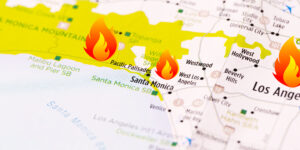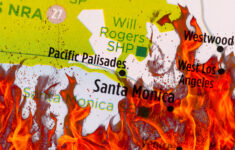The government’s weather center is forecasting that this year’s Atlantic hurricane season that begins June 1 will be an active one, perhaps even extremely active, during its six months.
Experts at the National Oceanographic and Atmospheric Administration (NOAA) said there is a 70 percent likelihood of 13 to 20 named storms (winds of 39 mph or higher), of which 7 to 11 could become hurricanes (winds of 74 mph or higher), including 3 to 6 major hurricanes (Category 3, 4 or 5; winds of 111 mph or higher).
These ranges are well above the seasonal average of 12 named storms, 6 hurricanes and 3 major hurricanes.
NOAA’s seasonal hurricane outlook is not a hurricane landfall forecast; it does not predict how many storms will hit land or where a storm will strike. Forecasts for individual storms and their impacts will be provided throughout the season by NOAA’s National Hurricane Center.
NOAA said that three climate factors that strongly control Atlantic hurricane activity are expected to come together to produce an active or extremely active 2013 hurricane season. These are:
A continuation of the atmospheric climate pattern, which includes a strong west African monsoon, that is responsible for the ongoing era of high activity for Atlantic hurricanes that began in 1995;
Warmer-than-average water temperatures in the tropical Atlantic Ocean and Caribbean Sea; and El Niño is not expected to develop and suppress hurricane formation.
“This year, oceanic and atmospheric conditions in the Atlantic basin are expected to produce more and stronger hurricanes,” said Gerry Bell, Ph.D., lead seasonal hurricane forecaster with NOAA’s Climate Prediction Center. “These conditions include weaker wind shear, warmer Atlantic waters and conducive winds patterns coming from Africa.”
NOAA’s outlook for the Eastern Pacific basin is for a below-normal hurricane season and the Central Pacific basin is also expected to have a below-normal season. NOAA said it will issue an updated seasonal outlook for the Atlantic hurricane season in early August, just prior to the historical peak of the season.
In July, NOAA plans to bring online a new supercomputer that will run an upgraded Hurricane Weather Research and Forecasting (HWRF) model that provides significantly enhanced depiction of storm structure and improved storm intensity forecast guidance.
Also this year, Doppler radar data will be transmitted in real time from NOAA’s Hurricane Operations Center Hurricane Hunter aircraft. This will help forecasters better analyze rapidly evolving storm conditions, and these data could further improve the HWRF model forecasts by 10 to 15 percent.
The National Weather Service has also made changes to allow for hurricane warnings to remain in effect, or to be newly issued, for storms like Sandy that have become post-tropical. This flexibility allows forecasters to provide a continuous flow of forecast and warning information for evolving or continuing threats.
Next week, May 26 – June 1, is National Hurricane Preparedness Week. To help those living in hurricane-prone areas prepare, NOAA is offering hurricane preparedness tips, along with video and audio public service announcements in both English and Spanish, featuring NOAA hurricane experts and the FEMA administrator on its website here.





















 Leading Insurance Innovation in the AI Age (Part 2: Tech Project Pitfalls)
Leading Insurance Innovation in the AI Age (Part 2: Tech Project Pitfalls)  Significant But ‘Manageable’ Insurance Losses Expected From LA Fires: S&P
Significant But ‘Manageable’ Insurance Losses Expected From LA Fires: S&P  New Commercial Auto Exposures: The Evolution of Terror Liability Risk
New Commercial Auto Exposures: The Evolution of Terror Liability Risk  Leading Insurance Innovation in the AI Age (Part 1: Culture)
Leading Insurance Innovation in the AI Age (Part 1: Culture) 